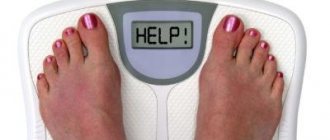On October 3, 2021, the Nobel Committee announced a new prize winner in the category of physiology or medicine. It was Japanese microbiologist Yoshinori Ohsumi, who described in detail the mechanism of autophagy (“self-eating”) of cells. The professor managed to display his unique, new sides.
Autophagy is the process of the body destroying its own cells that are harmful or simply unnecessary. These are toxins, defective proteins, dead particles, infections, bacteria and viruses. Yoshinori Osumi proved that such a process has a positive effect on the body, slowing down the aging process, increasing immunity and ensuring the smooth functioning of all systems.
What is a 16/8 power system
The findings obtained by the Japanese scientist formed the basis of a new diet - the “16 by 8” nutrition system, which provides for intermittent fasting: 8 hours are allocated for food, 16 for hunger. The technique can be used by both women and men. The gist of Yoshinori Ohsumi's research is as follows:
- in an eight-hour period, the body receives the nutrients necessary for the normal functioning of internal organs and systems;
- during the fasting period, after 12 hours, the process of autophagy begins: the body turns on protective reactions, launches vital processes;
- “self-eating” starts exactly after 12 hours. The body needs to stay in this state for some time, otherwise there will be no result from autophagy. Therefore, Yoshinori Osumi proposed the 16/8 interval.
To date, many studies have been carried out on various intermittent nutrition schemes. The largest one, the American one, was completed relatively recently. The published results indicated that the 16/8 technique was recognized as safe and does not have negative consequences for the body.
However, the results of the study have been heavily criticized. Firstly, all experiments were carried out on rats, whose bodies are very different from human ones. Secondly, a wide range of side effects were identified that were not mentioned in the published results, for example, constipation, malaise, headache and others. With real research into the effectiveness of weight loss techniques, from the European Congress on Obesity
, can be found here.
The 16/8 eating system goes by several other names: intermittent fasting, intermittent fasting, cyclic fasting, or cascade fasting. All of them quite clearly reflect the essence of this technique: eating and refusing food is carried out in cycles of several hours.
What to do if you can't lose weight?
It happens that people strictly follow all the rules of the diet, but the weight does not come off, or it comes off very slowly. There are low-impact tricks that can slightly speed up your momentum and the fundamental principles that we will focus on.
Remember that we specifically did not indicate the portions of dishes in our version of the weekly diet? We did this for a reason. Every person requires a certain amount of calories to lose, maintain or gain weight. This calorie intake is determined based on weight, height, age, physical activity level and other factors.
If you're consuming more calories than your body needs to lose weight, you'll need to either reduce your portion sizes or increase your physical activity to burn off some calories throughout the day and create a caloric deficit.
You can calculate your personal calorie requirement for weight loss using the Harris-Benedict formula using our calculator:
If this figure is very different from your usual norm, then you should gradually reduce the caloric content of your diet so that it does not cause stress for the body. To calculate the calorie content of ready-made dishes, you can use our table.
Who is this diet suitable for?
The 16/8 nutrition system is suitable only for healthy people who do not have acute or chronic diseases. A person must have sufficient willpower, be able to combine work and diet, and adapt the schedule to suit himself.
As a rule, it is not easy for people to stick to this type of diet: their work schedule may not allow them to drink by the hour, or carrying food with them may be inconvenient. In addition, not everyone has access to regular training: not everyone can find enough money and time to visit the gym. Doctors generally prohibit intense workouts for overweight people: they increase the load on the cardiovascular system, joints, and spine. The amount of fat lost largely depends on compliance with nutritional rules, the individual characteristics of the body and the duration of the diet. The conditions for a favorable outcome of the case have long been widely known:
- Drinking regime: a sufficient amount of clean drinking water per day allows you to control your appetite, which somewhat reduces the risk of breakdowns and overeating.
- Healthy sleep: the body needs strength to restore, rest and relax muscles. Sleep should be at least 7-8 hours.
- Positive attitude: towards yourself, your own life, the food you consume. Usually this point is the most difficult for those losing weight. It is almost impossible to come to such a worldview on your own; most people need the help of a qualified psychologist to awaken their consciousness.
- Physical activity: regular exercise improves appearance, psycho-emotional state, and health. It has been proven that just 30-40 minutes of leisurely walking a day significantly reduces the risk of developing cardiovascular diseases.
At the end of the diet, it would be a good idea to undergo a comprehensive medical examination, since in most cases those who have lost weight experience a number of side effects. Doctors usually prescribe such patients a course of multivitamins to restore mineral balance.
How to achieve better results: advice from nutritionists
The food window includes 3 balanced and complete meals. In between, it is allowed to consume low-calorie foods and drinks. The main feature is not to overeat. The cycle is carried out daily or at short daily intervals.
To provide the body with all the necessary nutrients, a balanced menu includes fat-burning foods. They satisfy hunger well and strengthen muscles. These include:
- lean meat;
- eggs;
- nuts;
- natural yogurts, other dairy products;
- legumes.
- Products containing many vitamins and microelements create a solid foundation for maintaining immunity:
- fruits and berries;
- greenery;
- vegetables.
It is recommended to completely avoid sweets, baked goods and foods rich in refined carbohydrates and saturated fats.
Most nutrition experts are sure that intermittent fasting triggers the metabolic process at lightning speed, which leads to rapid weight loss.
For women, the 8/16 diet allows you not to follow strict rules or create a special menu. With minor restrictions, they can leave the usual diet, but provided for by the scheme, for a set period of time.
In the practice of nutritionists, there are often cases where women get used to temporary fasting, and such eating develops a lasting habit of it. But is everything so safe?
Even extremely healthy people who lose a few kilograms of weight experience psychological discomfort at first when following a diet.
The interval when you can eat food coincides with working hours and rest hours. Not everyone is able to work fully on an empty stomach.
Many are dissatisfied with the results. With the 8/16 diet, weight loss occurs gradually, and this is not immediately noticeable to others. It is important for women that changes are noticeable to other people.
An attentive and careful attitude towards yourself allows you to avoid many mistakes that are made by girls and elderly women who are fanatically devoted to extreme nutrition.
Advantages of the 16/8 power system
The 16/8 power system, according to its creators, has the following advantages:
- Stabilization of blood sugar levels.
- Reducing “bad” cholesterol and weight.
- Improving the functioning of the gastrointestinal tract.
- Normalization of blood pressure.
- Acceleration of metabolic processes, cell and tissue regeneration.
- Strengthening the immune system.
- Cleansing from impurities and toxins.
But doctors with many years of experience in the fight against obesity warn: intermittent fasting is still dangerous for the body, and for a number of reasons:
- due to lack of food, the production of stomach acid fails, its amount decreases, and it is necessary not only for digesting food, but also for destroying pathogenic bacteria;
- First of all, it is not fat that is burned, but water that is lost. Because of this, with the active breakdown of protein in the blood, the concentrations of acetone and other breakdown products increase, which leads to a deterioration in health, headaches, nausea and dizziness;
- the lost kilograms will return in a few weeks
: this is how much time the body spends on restoring water balance and muscle mass; - lack of nutrients leads to disruption of hormone production. This leads to a deterioration in the psycho-emotional state and can cause various disorders and even depression.
! You can learn about a permanent weight loss method here.
Cons, side effects and contraindications
One of the brightest advantages of the program described in the article is the almost complete absence of contraindications. This diet is not recommended for people suffering from:
- gastritis and other gastrointestinal problems;
- diseases of the nervous, endocrine and cardiovascular systems;
- for diabetics.
Also, intermittent fasting is not recommended for pregnant women and breastfeeding mothers. In other cases, the technique is only welcomed by any organism.
Principles of the 16/8 power system
The general principles of the 16/8 diet are as follows:
- You need to eat in small portions, at least 3 times over an eight-hour period.
- Training should be carried out on an empty stomach. Before them, you need to consume only 10 g of amino acids diluted in water. They can be purchased at a sports nutrition store.
- Breakfast should consist of complex carbohydrates. The rest of your meals should focus on protein.
There are several types of 16/8 power system:
- long-term or constant, in which it is necessary to adhere to the rules for more than a month;
- alternating or periodic of medium duration, which combines days of diet and normal nutrition;
- short-term or one-day.
The choice of type of nutrition largely depends on the goal:
- strengthening the immune system, strengthening the body's defense reactions;
- building muscle mass;
- weight loss
At home, without consulting a specialist, you can only adhere to a short-term version of the 16/8 nutrition system - no more than one day. During these hours, you need to carefully monitor your well-being and mood: decreased performance and concentration, dizziness and migraines - all these are symptoms that indicate that the diet needs to be stopped.
How to increase efficiency
To increase efficiency, you need to follow these recommendations:
- distribute the daily amount of food into at least 3 full meals within 8 hours;
- during the period of refusal to eat, exercise, consuming 10 g of BCAA amino acids;
- Eat complex carbohydrates and grains for breakfast;
- Protein foods and vegetables are recommended for lunch and dinner.
After getting used to this diet, you should try to stick to it on an ongoing basis.
Lunch and dinner - meat and vegetables.
Rules
Nutrition according to the 16/8 system for weight loss is based on the following basic rules:
- compliance with caloric intake per day;
- It is recommended to exclude fast food, confectionery and bakery products, fatty and fried foods, and semi-finished products from the menu;
- during periods of famine, it is necessary to drink only clean drinking water;
- physical activity is a prerequisite for the 16/8 nutrition program, otherwise weight loss will occur due to muscle mass, not fat deposits;
- it is important to maintain a drinking regime, consume at least 1.5-2 liters of water per day;
- Between meals, you can have light snacks of fresh vegetables and fruits.
Compliance with these rules will help the body adapt to the new nutrition system, somewhat reduce stress, and reduce the negative effects of its use.
You should also be aware that side effects may occur:
- Constipation.
- Headache.
- Severe attacks of hunger.
- Stomach cramps, heartburn.
- Decreased performance, weakness, irritability, bad mood.
Even strict adherence to the rules does not guarantee that side effects will be avoided. Find out why diets and popular fitness programs don't work.
Preparatory stage
Before you start fasting, you need to prepare your body and nervous system for a sudden change in your usual diet. In this case, the following recommendations are followed:
- We undergo a comprehensive examination in the hospital to exclude various contraindications. It is advisable to consult a therapist regarding fasting issues and immediately ask questions.
- Gradually increase the volume of water consumed per day. You need to drink at least 2 liters per day. Natural freshly squeezed juices, teas and coffee are not included in this amount. To calculate the exact volume, we use a simple formula: 30 milliliters of liquid per 1 kilogram of body weight.
- Smoothly transitions to proper nutrition. We refuse fatty, smoked, salty foods, as well as fast food.
- We calculate daily caloric intake. At the same time, the amount of kcal should be deficient, which will ensure accelerated fat burning.
- Including special detox cocktails in your diet that will help the body quickly cleanse itself of harmful substances. The best option is fresh juice from celery, parsley, mint, kiwi, beets or carrots.
- We are gradually shifting the eating window to the option provided by intermittent fasting 16/8.
How to prepare for a diet
Proper preparation will help reduce the negative consequences of the 16/8 diet and reduce the likelihood of side effects. It includes the following steps:
- Reducing daily caloric intake. It is necessary to calculate the norm using one of the following formulas and subtract 10-15% from it: BMR = 66 + [13.7 x weight (kg)] + [5 x height (cm)] - [6.76 x age (in years)] – men
BMR = 655 + [9.6 x weight (kg)] + [1.8 x height (cm)] - [4.7 x age (years)] - women
- Keep a food diary, record every meal, count calories. In the future, this will help to properly divide food in accordance with the rules of the diet.
- Calculate the norm of proteins, fats, carbohydrates, and adhere to it.
- Gradually reduce the amount of fast food, fatty and fried foods, flour and confectionery products.
- Increase physical activity, add workouts or jogging, long walks.
It is recommended that you undergo a comprehensive medical examination before starting the 16/8 diet. Only a doctor, based on the results of tests and clinical studies, can authorize or prohibit this nutritional system.
Menu for the week
It can be quite difficult for beginners to create the right menu the first time, since too many criteria need to be met: breakfast is the most high-calorie, fats + carbohydrates; lunch should include all nutrients (proteins, fats and carbohydrates) and be less caloric; dinner - light, exclusively protein.
An approximate menu for the week will help you competently create your diet that meets all the principles of intermittent fasting.
A fasting system with a 16 by 8 pattern can always be adjusted to suit you. You can choose your own time for the food window or organize 4 meals instead of 3 (this will allow you to eat fruits and nuts during a snack), etc. Try, experiment, the main thing is not to harm your health.
We recommend: One-day fasting and its benefits for the body
Daily schedule for intermittent fasting 16/8
An approximate diagram of the system can be described as follows:
8:00 – a glass of clean drinking water;
9:00 – any tea or coffee without sugar, milk and other additives;
10:00 – any tea or coffee without sugar, milk and other additives;
11:00 – one teaspoon of amino acids, diluted in a glass of water;
12:00 – 13:00 – intensive training;
13:00 – hearty breakfast, providing for the consumption of 40-50% of the daily calorie intake;
17:00 – lunch, calorie content 25-35% of the total norm;
20:30 – protein dinner for the remaining amount of calories, about 25% of the daily value.
21:00-13:00 – fasting.
You can create a schedule yourself, choose other hours, the main thing is to follow the basic principle of nutrition: 16 hours should be set aside for fasting.
Competent completion of the interval technique
To maintain the results obtained, you need to adhere to these recommendations after finishing the diet:
- Reduce the number of servings. You cannot immediately eat the same amount of food that you took before losing weight immediately after fasting.
- Don't eat in the evening. If you really want a snack, you can replace dinner with 1 tbsp. low-fat fermented milk drink.
- Limit your consumption of fast food. To maintain weight, it is better not to introduce junk food into your diet.
- Increase your daily caloric intake gradually.
- Consume foods boiled or baked.
- Exercise regularly.
Menu and products for intermittent fasting
The menu for intermittent fasting according to the 16/8 system should be designed in such a way as to provide the body with nutrients. It is recommended to enable:
| Squirrels | Fats | Carbohydrates |
|
|
|
You can create the menu yourself, taking into account your own preferences, or stick to a ready-made diet. Recipes and descriptions of dishes can be found on the Internet, on thematic forums. Receive 63 low calorie soup recipes via WhatsApp.
The menu for the week might look like this:
| Breakfast | Dinner | Dinner | |
| Monday | Granular cottage cheese (up to 15% fat) with the addition of fruits, berries, honey. Sandwich made from whole grain bread with peanut butter. | Vegetable soup with chicken, carrot salad, green beans, a glass of tomato juice. Receive 63 low calorie soup recipes via WhatsApp. | Egg white omelette, a glass of low-fat kefir. |
| Tuesday | Boiled steamed rice, coffee with milk or cream, bread with a piece of marshmallow. | Julienne with chicken, mushrooms, vegetable salad (ingredients chosen to taste). | Trout steak, cottage cheese with basil, herbs. |
| Wednesday | Oatmeal cooked in milk with the addition of butter and berries. | Tomato puree soup, vegetable salad, glass of apple juice. | Steamed chicken breast, 2-3 boiled eggs. |
| Thursday | Cheesecakes with honey, berries, coffee or tea with milk, marshmallows. | Boiled chicken breast with a side dish of buckwheat porridge, sliced vegetables, berry juice. | Piece of tuna with baked tomatoes and peppers. |
| Friday | Cottage cheese casserole with sour cream, tea with honey, dark chocolate. | Steamed chicken cutlets, baked vegetables, freshly squeezed juice. | Boiled chicken breast with cucumber and herb salad. |
| Saturday | Pasta with stewed vegetables, fatty red fish. | Okroshka salad with kefir, a glass of orange juice. | Egg white omelet, seafood salad, any greens. |
| Sunday | Salad of boiled potatoes, peppers, tuna, coffee or tea with dried fruits. | Spaghetti or durum wheat pasta, vegetable salad. | Baked turkey fillet, cucumber salad, eggs with the addition of a tablespoon of sour cream. |
It is recommended to have light snacks between main meals and do not forget to drink enough clean drinking water.
What can you eat and drink
During a 16-hour fast, you can drink:
- water;
- zero-calorie drinks: green or black tea, coffee without additives (sugar, sugar substitutes, cream, milk, lemon).
During the 8 hour eating window you can eat the following foods.
1. Containing fats:
- olive oil (if it is not available, any vegetable oil);
- butter;
- dairy products (it is better to choose medium fat content);
- fatty fish;
- halva.
2. Containing carbohydrates:
- cereals;
- pasta;
- legumes;
- honey;
- vegetables, fruits, berries, mushrooms, herbs, nuts;
- dried fruits;
- healthy sweets.
3. Containing proteins:
- chicken;
- turkey;
- seafood;
- cheese;
- eggs.
By studying the approximate list of permitted products, you can easily calculate those that fall into the prohibited ones: bakery, confectionery, flour products, fast food, everything fried, processed foods, alcohol and carbonated drinks. However, Martin Berhan himself, constantly living in a 16/8 mode, says in his blog that from time to time he allows himself indulgences in the form of high-calorie sweets and even wine.
Results and effectiveness of the weight loss technique
The effect of intermittent fasting is sustainable and 100%. The amount of fat lost directly depends on compliance with the rules of weight loss and the personal characteristics of the body.
After how many hours of fasting does the weight loss process begin?
The process of losing weight starts after boosting your metabolism. When eating food, insulin, which is produced by the pancreas, increases in the blood, and metabolism slows down. During fasting, processes are aimed at regenerating and restoring the health of the body.
A calorie deficit significantly reduces sugar and insulin levels, and the concentration of growth hormones increases. There is a feeling of hunger.
At this time, catecholamines are sent to fat cells and starts the process of melting the subcutaneous lipid layer in problem areas. The process will start after 1-2 days of fasting and will amount to up to 2 kg per day, but you cannot count on rapid weight loss, since the rate of weight loss will soon decrease.
What results can be achieved in 1-2 weeks?
The greatest effect from a hunger strike can be achieved after a week of abstinence, which is best done monthly for preventive purposes. When you reach the desired weight, fasting days are practiced once a week, since even one-time fasting cleanses the intestines, helps control appetite and has a positive effect on well-being.
Over a period of 2 weeks, according to reviews of those losing weight, you can lose from 2 to 5 kg.










